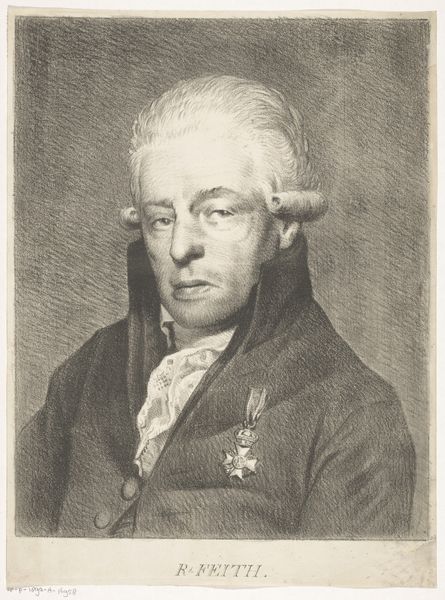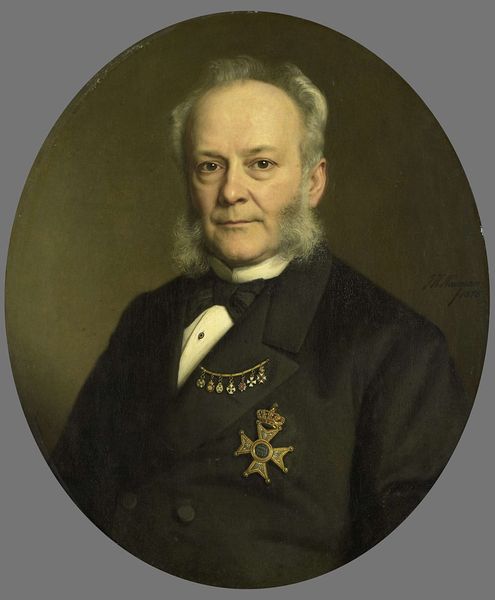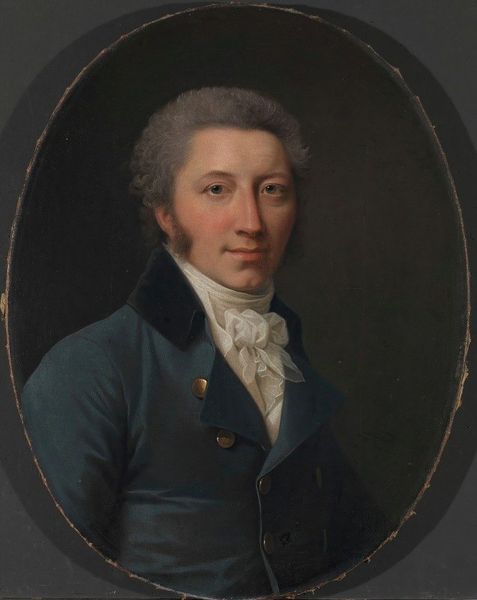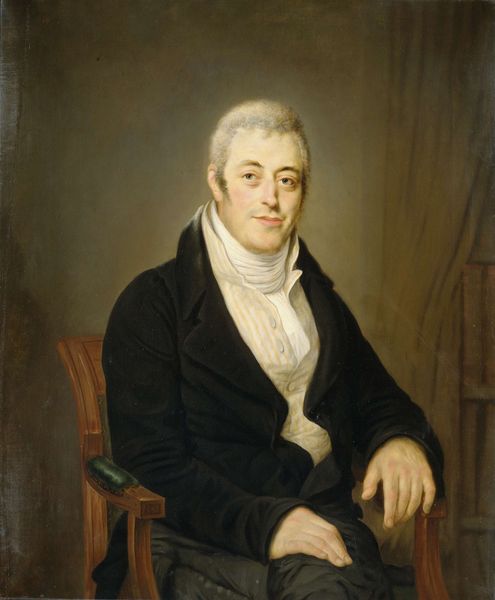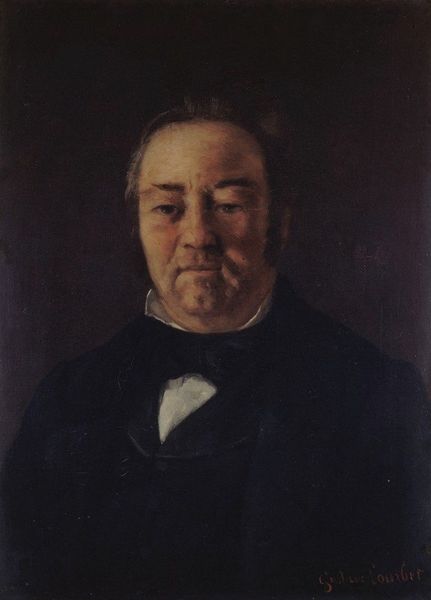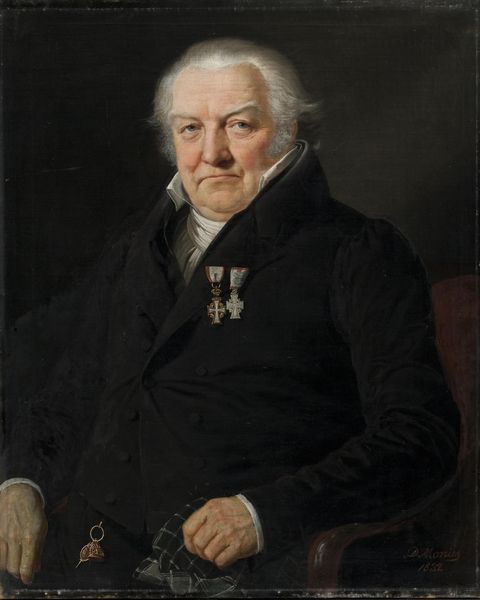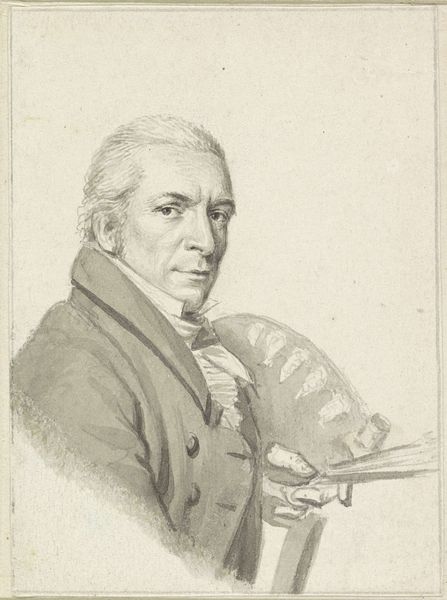
Dimensions: height 76 cm, width 63 cm
Copyright: Rijks Museum: Open Domain
Editor: This is a portrait of Jan Jacob Lodewijk ten Kate, painted in 1875 by Johan Heinrich Neuman, using oil paint. I’m immediately struck by his serious expression and formal attire – it feels very proper and almost imposing. What’s your read on this piece? Curator: Well, considering the context of the time, the late 19th century, these commissioned portraits of prominent figures served a very specific function. What do you think that function was? Editor: To document their existence, of course. Maybe to immortalize them, or to showcase their status within society. Curator: Precisely! Portraits like these weren't merely about capturing a likeness, they were powerful statements about the subject's position. Ten Kate was a well-regarded poet. Neuman uses visual language of Romanticism, depicting him in a refined style and somewhat elevated. Think about the burgeoning middle class at this time, seeking validation through these artistic displays. It becomes an act of social climbing. Editor: So the act of painting the portrait is, in itself, a form of endorsing someone’s importance? Curator: Absolutely. The museum display even reinforces that concept. The Rijksmuseum legitimizes not only the sitter, but also the painter. Consider who *doesn't* get their portrait painted, whose stories aren’t visually told in such a way? It raises questions of access, power and visibility. Editor: That makes me look at it in a completely different light! I was just seeing a stern face, but it’s actually tied up in larger social narratives. Curator: Indeed. Art is rarely created or viewed in a vacuum. Hopefully this has encouraged you to consider the political dimensions within even seemingly straightforward portraits. Editor: Definitely, I’ll remember that next time I wander through the portrait gallery. Thank you for sharing that with me.
Comments
No comments
Be the first to comment and join the conversation on the ultimate creative platform.
